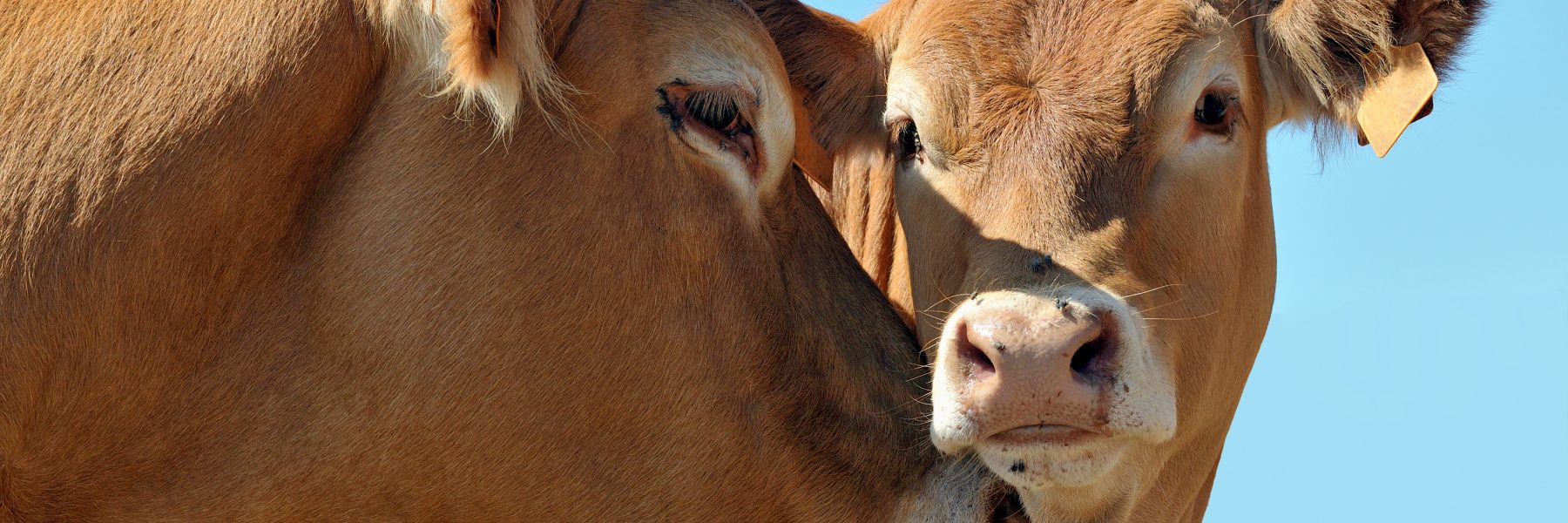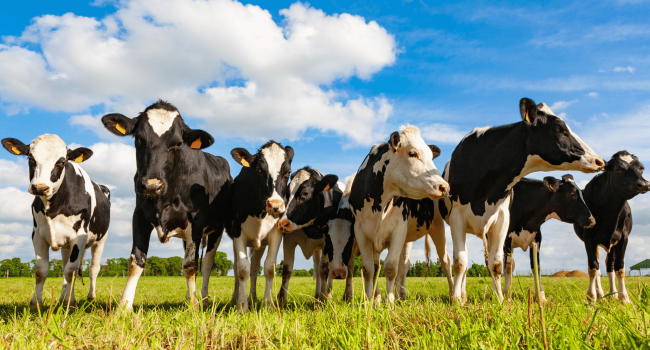Ruminant Animal Digestive System : learn more about the Rumen Physiology
Ruminant animals are rather unique due to the fact that their stomach contains four compartments, namely the reticulum, the rumen, the omasum, and the abomasum. The rumen is a large hollow muscular organ, filling nearly the entire left side of the abdominal cavity, which develops anatomically in terms of size, structure and microbial activity as the calf’s diet is changed from liquid milk or replacer to dry feed or silages.
Digestion of feedstuffs by microorganisms takes place in both the reticulum and rumen compartments.
Metabolizable protein is a dietary requirement for ruminants, and comprises rumen-degradable protein (RDP), rumen-undegradable protein (RUP) and microbial protein.
Rumen-degradable protein results in nitrogen being made available to the microorganisms present in the rumen, so that they can initiate digestion therein.
On the other hand, rumen-undegradable protein, also known as “bypass protein”, “escape protein” or “undegradable intake protein” is protein that is not digested by the microorganisms in the rumen and is thus available to the ruminant animal itself for tissue growth or lactation.
Lastly, the microorganisms in the rumen complete their life cycle and travel through the digestive tract, supplying additional protein to the host animal – the microbial protein (PennState Extension, 2016).
Around 60% to 70% of dietary protein meals, originating for example from highly degradable proteinaceous oil cakes, are degraded into ammonia in the rumen. Although part of this ammonia is recycled in the form of urea into the rumen, via saliva (Tandon et al., 2016), a significant amount is excreted through urine (again in the form of urea), leading to considerable wastage of protein from these expensive cakes/meals.
Moreover, the animal has to spend energy to convert ammonia into urea in the liver (Kumar et al., 2014).
Bypass Protein Technology in feeding Ruminants
However, if these dietary protein meals are suitably treated, their degradation in the rumen can be minimized.
This process or treatment is known as “bypass protein” or “rumen escape” technology.
Protected meals are digested more efficiently in the small intestine and result in extra protein being available for milk production.
This helps the animal to produce more milk, which is also of optimum quality (National Dairy Development Board, “NDDB”, India, 2021).
In the developing countries like India, the feed inadequacy is the major impediment in the development of livestock industry, especially dairy. The problem is quit acute in India, where the bovine population is largest; and increasing at the rate of more than 1 percent annually. This constant increase in the bovine population dilutes any efforts made towards increasing the feed/ nutrient supply achieved by nutritionists
In the developing countries like India, the feed inadequacy is the major impediment in the development of livestock industry, especially dairy.
The problem is quit acute in India, where the bovine population is largest; and increasing at the rate of more than 1 percent annually.
This constant increase in the bovine population dilutes any efforts made towards increasing the feed/ nutrient supply achieved by nutritionists.
Treated in a suitable manner, the degradability of protein meals in the rumen can be reduced from 60-70% to 25-30% (NDDB, 2021).
The proteins of most of the feed resources are naturally protected to some extent from degradation in the rumen, notably in the case of meals from blood, fish and feather, depending on feed properties such as the chemical and physical consistency of the proteins, the surface available for microbial attack, the presence of other dietary components, and the passage rate from the rumen (Tandon et al., 2008).
Extra protection of proteins can be achieved by chemical and physical methods. Formaldehyde treatment is the most widely used treatment, based on the basic principle (Ferguson et al., 1967) that formaldehyde markedly reduces the solubility of protein at pH 6.0, rendering it highly resistant to microbial attack but without significantly reducing its digestibility in the small intestine.
Formaldehyde is less expensive than heat treatment and has additional advantages such as maximizing the bioavailability of amino acids, and controlling Salmonella and mould growth in feedstuff (NDDB, 2021).
For the treatment of protein meals, the level of formaldehyde used is no greater than 0.8%, and after 2 days of incubation, it drops to below 2 ppm, in line with the health and safety requirements of both animals and consumers; moreover, no significant change is reflected in its naturally occurring levels in meat and milk (Atwal and Mahadevan, 1997).
Other examples of treatments include the use of alkali (NaOH, NH4OH), methionine analogues and derivatives, and encapsulation of proteins.
Tannins (polyphenolic compounds), although considered as antinutritional factors, also show good potential (Tandon et al., 2008).
Another common way of modifying protein, for example soybean protein, is by means of a heat treatment involving roasting, flaking, rolling, extrusion, etc., typically at a temperature of 125-150°C for 2-4 hours.
This results in a decrease in protein solubility by the creation of linkages (Maillard reaction) both within or among peptide chains and to carbohydrates (Reddy and Morril, 1993), and can improve the bypass level to 40-60%, with added advantages such as the denaturation of trypsin inhibitors in the case of soybean.
However, such a method causes some loss of lysine and produces melanoidins.
Effect of Bypass Protein on Animal Performance
Bypass proteins can thus be seen as an efficient method and a sustainable approach for improving protein availability in the diet of dairy animals, thereby favouring higher levels of milk production.
The metabolizable protein needs of cattle vary with the stage of production they are in, and the supplementation requirements are also dependent on the protein content of the base diet.
As an illustration, growing cattle have been demonstrated to respond to rumen-undegradable protein (RUP) supplementation even when grazing high-quality forage because said forage, although high in overall crude protein, is still deficient in RUP.
Lactation and growth both require a source of RUP and, therefore, a young cow nursing her first calf and going into the breeding season could benefit from a protein supplement high in RUP.
On the other hand, a non-lactating mature cow would benefit from a supplemental source of rumen-degradable protein in order to support rumen bacterial function (UNL BEEF, 2015).
Among the numerous other advantages of Bypass Protein Supplementation are for example improvements in fat content of milk, enabling young stock to attain early maturity to start reproductive life at an earlier age, and better resistance against disease in growing and lactating animals.
Bypass Protein as feeding ruminants solution
Proper feeding of ruminants is complicated and requires a combination of scientific knowledge, creativity and good management to balance the needs of the rumen microorganisms and the needs of the animal.
In this context, supplementation with Bypass Protein can provide better economic returns for the same input costs.
This information is intended for informational purposes only and does not imply any warranty related to or express recommendations for the cure, mitigation, treatment, or prevention of disease.


![[EN] Blog Sustainability of Swine Production and the Dilemma of Feeding the World](https://www.premix.adm.com/wp-content/uploads/2023/01/Pigs-eating-on-a-meadow_AdobeStock_316101041-1-650x350.jpeg)